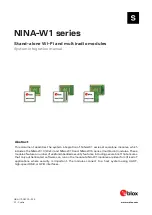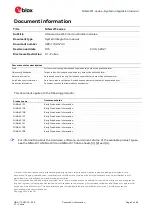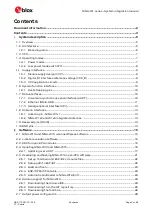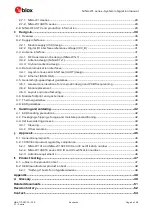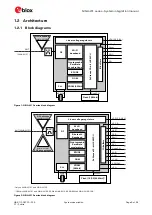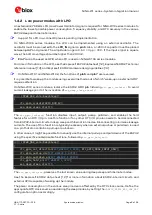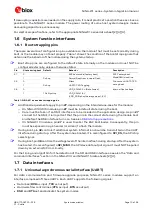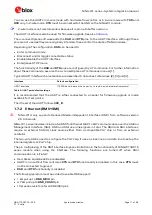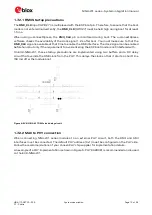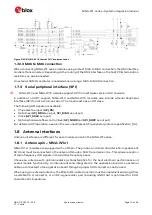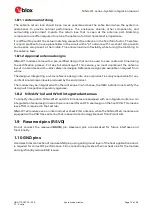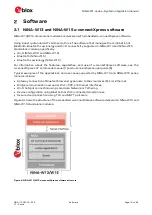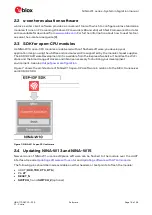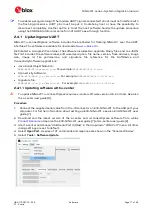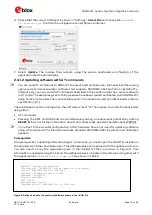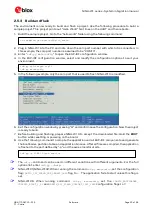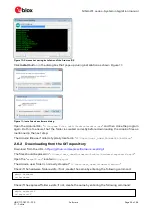
NINA-W1 series - System integration manual
UBX-17005730 - R15
System description
Page 11 of 54
C1 - Public
You can use the UARTs in 4-wire mode with hardware flow control, or in 2-wire mode with
TXD
and
RXD
only. In 2-wire mode,
CTS
must be connected to the GND on the NINA-W1 module.
☞
2-wire mode is not recommended, because it is prone to buffer overruns.
The UART interface is also be used for firmware upgrade. See also
The u-connectXpress software adds the
DSR
and
DTR
pins to the UART interface. Although these
pins are not used as they were originally intended, these control the state of NINA modules.
Depending on the configuration,
DSR
can be used to:
•
Enter command mode
•
Disconnect and/or toggle connectable status
•
Enable/disable the UART interface
•
Enter/leave STOP mode
The functionality of the
DSR
and
DTR
pins are configured by AT commands. For further information
about these commands, see also the u-connectXpress AT commands manual [1].
Typical UART interface characteristics are described in data sheet references [2], [3] and [4] .
Interface
Default configuration
UART interface
115200 baud, 8 data bits, no parity, 1 stop bit, and hardware flow control
Table 2: UART port default settings
It is recommended that the UART is either connected to a header for firmware upgrade or made
available for test points.
The IO level of the UART follows
VCC_IO
.
1.7.2
Ethernet (RMII+SMI)
⚠
NINA-W13 only supports Reduced Media-independent Interface (RMII) from software version
2.0.0 onwards.
NINA-W1 series modules include a full RMII for Ethernet MAC to PHY communication over the Station
Management Interface (SMI). RMII and SMI use nine signals in total. The RMII and SMI interfaces
require an external 50 MHz clock source either from a compatible PHY chip or from an external
oscillator.
The two-wire SMI is used to configure the PHY chip. It uses a clock line and a data line to setup the
internal registers on PHY chip.
The pin multiplexing of the RMII interface imposes limitations in the functionality of NINA-W13/W15
series module when using the interface. The following functions are turned off when RMII
communication is initiated:
•
Red, Green and Blue LEDs are disabled
•
UART is run without flow control as
CTS
and
RTS
functionality is disabled. In this case,
CTS
must
not be connected to ground.
•
DSR
and
DTR
functionality is disabled
The following resistors must be added to enable RMII support:
•
1 k
Ω
pull up to
RMII_MDIO
pin
•
4.7 k
Ω
pull up to
RMII_CRSDV
pin
•
10
Ω
series resistors for all RMII/SMI pins

